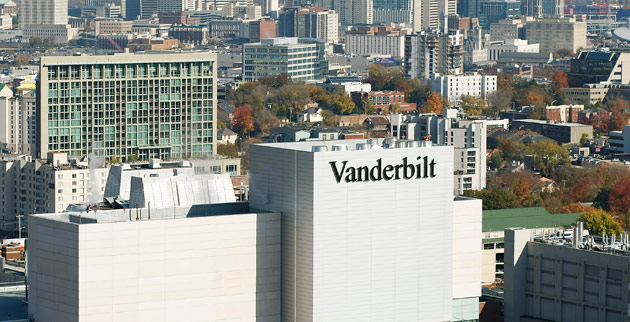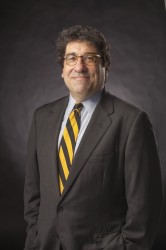
(Vanderbilt University)

Chancellor Nicholas S. Zeppos (Vanderbilt)
Vanderbilt University Chancellor Nicholas S. Zeppos today announced the institution is embarking on a process to reconfigure Vanderbilt University Medical Center as a not-for-profit academic medical center that is financially distinct from the university. The move will give the medical center increased financial independence while preserving and growing the collaboration that has resulted in Vanderbilt’s research, education and medical excellence.
The primary goal of the restructuring, which was the result of a yearlong study by the Vanderbilt University Board of Trust, is to provide the medical center with a greater ability to adapt to health care’s rapidly changing financial environment. Currently the medical center is part of the university’s administrative structure, with the same governing board, legal, financial and other shared services.
“Fundamental changes in U.S. health care economics require us to reassess this structure,” Zeppos said in an email message to Vanderbilt faculty, staff and medical students. “[lquote]As VUMC continues to grow in excellence, it must adopt management structures and practices that enhance its ability to act nimbly and more independently in a rapidly changing health care environment.[/lquote]”
He noted that other national leaders in academic health care have structures similar to the one being pursued by VUMC.
The new structure “not only allows us to expand our distinctive services to the public, but further enables our capacity to train the next generation of clinicians and scientists, while propelling breakthroughs in research and patient care for our region as well as the larger global community,” Zeppos said.
The medical center will continue to have seamless integration with the university in all present and future academic missions, programs and initiatives, including faculty appointments, teaching and research, while creating increased capacity to obtain capital that will create growth.
Jeff Balser, vice chancellor for health affairs, will continue to lead VUMC and continue to serve as dean of the School of Medicine.
“After very careful analysis we are pursuing this to enhance our capacity to flourish in a rapidly consolidating health care delivery environment, while continuing to support the many amazing aspects of Vanderbilt that distinguish us from our peers. We believe this is the ideal way forward to enhance our future,” Balser said. “Across our campus we enjoy exceptionally close ties that are unique within academia and we are fully committed to protecting this important aspect of our institution.”
The restructured VUMC will continue to support the research and educational activities of the School of Medicine’s clinical departments, Graduate Medical Education programs, and clinically related centers and institutes, while the university will play a greater role in supporting the M.D. and Ph.D.-granting programs of the School of Medicine, its basic science programs and the academic programs in the School of Nursing.
“The ability to learn alongside and conduct research with some of the nation’s and world’s top clinicians and biomedical researchers is one of the primary reasons why we are able to attract the highest quality students and faculty to Vanderbilt from around the world,” Provost and Vice Chancellor for Academic Affairs Susan R. Wente said. “This new model will help ensure our medical center continues to be at the forefront of research and that our medical, nursing and doctoral students continue to be supported in a sustainable manner.”
The medical center, which will retain the name Vanderbilt University Medical Center, will be governed by a board with representation both from the medical center and the university.
“I am excited by these new changes,” Zeppos said, “and believe they will lead to an even brighter future for both Vanderbilt University and VUMC, as we continue our historic work together while maintaining the values and the collaborative culture that make us great.”
The process is expected to take 12 to 18 months to complete. The restructuring is not expected to change compensation or benefits for staff, faculty appointments, or financial commitments to academic and clinical programs.